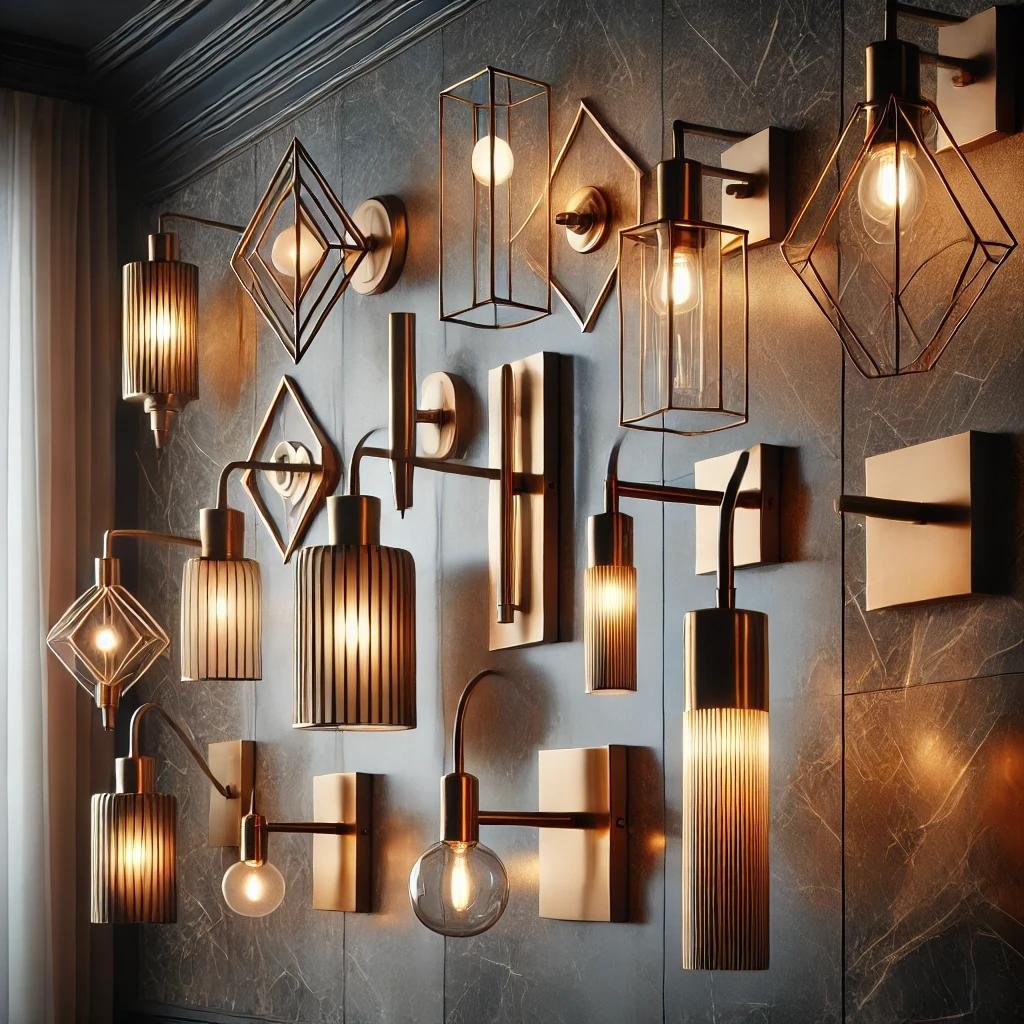Introduction
A flexible and elegant lighting solution that improves the utility and appearance of any room are wall lights. Wall-mounted lights provide a useful and space-saving substitute for conventional lighting sources whether they be employed for decorative, task, or ambient illumination. This article will go over the several kinds of wall lights, their advantages, how to decide which ones best for your needs, and basic installation advice.
Various Kinds of Wall Lights
1. Sconces
Available in a range of forms from modern to historic, sconces are among the most often used wall lights. Perfect for bathrooms, bedrooms, and corridors, they offer indirect, soothing lighting.
2. Flush-Mounted Wall Lighting
Sitting near the wall, flush-mounted lights give a clean and understated appearance. In small areas with limited space, such hallways and doors, they fit perfectly.
3. Flexible Wall Lamps
Perfect for reading or concentrated job lighting, flexible arms or swivel heads provide adjustable wall lamps. Home offices, bedrooms, and study rooms all have them rather often.
4. Image and Display Lighting
Designed to accentuate artwork, mirrors, or ornamental accents, picture lights give homes a classy touch and make sure your valuable items are well-lit.
5. Outdoor Wall Lights
Lighting outside walls improve atmosphere and security. Among the several weather-resistant designs they offer are LED floodlights, motion-sensor lights, and lantern-style fixtures.
Wall Lights Have Advantages
1. Space-Saving Architectural Design
Perfect for small spaces, wall-mounted lights completely replace floor or table space.
2. Improved Envisionability
These fittings add to layered illumination, therefore fostering a warm and friendly environment.
3. Energy Optimization
Many contemporary wall lights feature LED choices that cut energy use while nevertheless offering plenty of brightness.
4. Adaptation
Wall lights may accentuate any indoor or external décor from their several designs, colors, and finishes.
5. More Safety
Especially motion-activated ones, outdoor wall lights improve safety by lighting dark regions and discouraging intruders.
How to Select the Optimal Wall Lights
1. Find the Intended Use
Think on if the wall light serves accent, task, or ambient lighting. This will narrow your options.
2. Think About the Style of the Room
Choose fittings that either complement or match the current décor in your space. For classic homes, for instance, old sconces look great; sleek, metallic designs fit contemporary settings.
3. Review Type of Brightness and Bulb
Verify lumen output and bulb compatibility to guarantee enough lighting. Their efficiency and lifetime make LEDs advised.
4. Select the Correct Location
To offer best lighting without generating shadows or glare, wall lights should be placed at the proper height and distance.
5. Search for Intelligent Attributes
Some wall lights improve ease and use by including motion sensors, smart home compatibility, or dimming ability.
Wall Light Installation Advice
- Plan Your Location: Choose the ideal height—usually 5–6 feet above the floor—and distance to distribute uniform lighting.
- Use Appropriate Wiring: Particularly in damp places like restrooms, to provide hidden and safe connections.
- Get Hired a Professional: See a licensed electrician for safe installation if unsure about electrical work.
- Installing Dimmer Switches: Lets you change brightness levels depending on mood and use.
- Think About Outdoor Safety: Select IP-rated lights and weatherproof fixtures for outdoor projects.
Frequent Questions Regarding Wall Lights
READ ABOUT-Trailer Lights: Your Ultimate Guide to Safety and Performance
1. Which Height Should Wall Lights Be Mounted?
Usually set five to six feet above the floor or at eye level, wall lights should help to reduce direct glare.
2. Would LED Wall Lights Outperform Conventional Bulbs?
Indeed, LED wall lights offer better illumination than conventional incandescent bulbs, have a longer lifetime, and use less energy overall.
3. Is the Main Lighting Source Something Wall Lights May Be?
Although wall lights can augment lighting, unless combined with floor or ceiling lighting they could not be enough as the only source.
4. Do Wall Lights Call for Particular Wiring?
While plug-in choices are easier to install without hardwiring, most wall lights need a direct electrical connection.
5. Exists an Outside Weatherproof Wall Light?
Indeed, outdoor wall lights come in IP classifications to resist environmental exposure and in weatherproof designs.
Conclusion
Any house would benefit much from wall lights since they provide both aesthetic and practical advantages. Understanding the many kinds, advantages, and choosing criteria will help you to choose the ideal wall lights for your room. There is the ideal wall lamp to fit your demands whether your outdoor area need security lighting, accent lighting for artwork, or task lighting for a reading nook.

